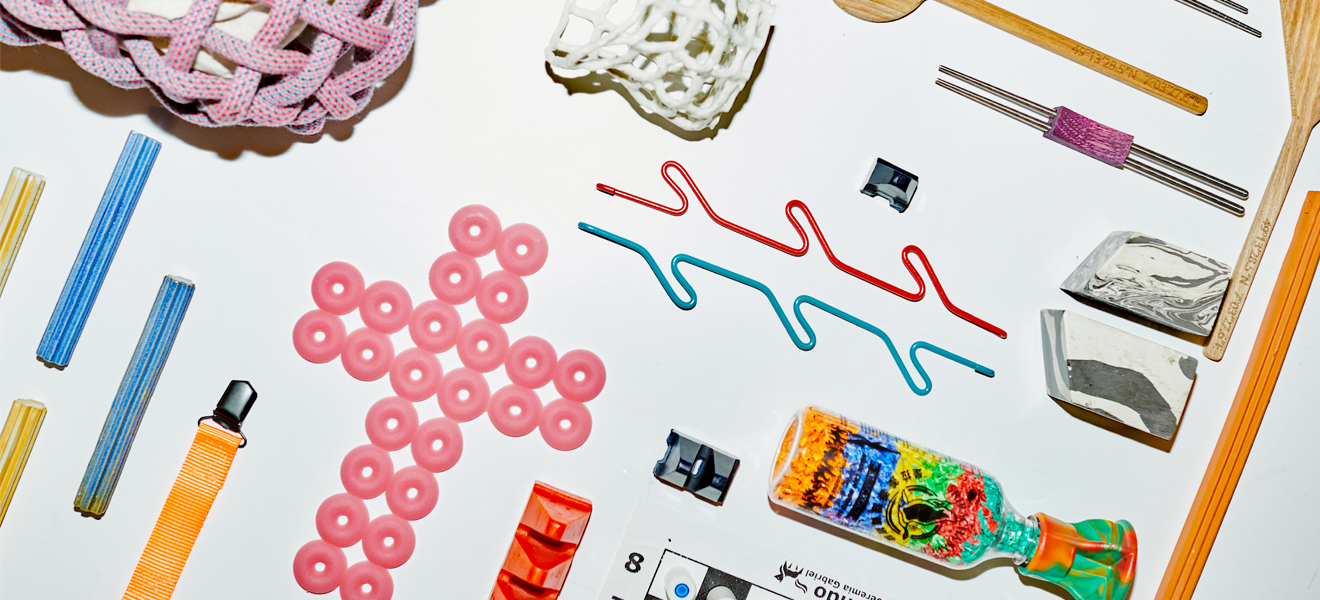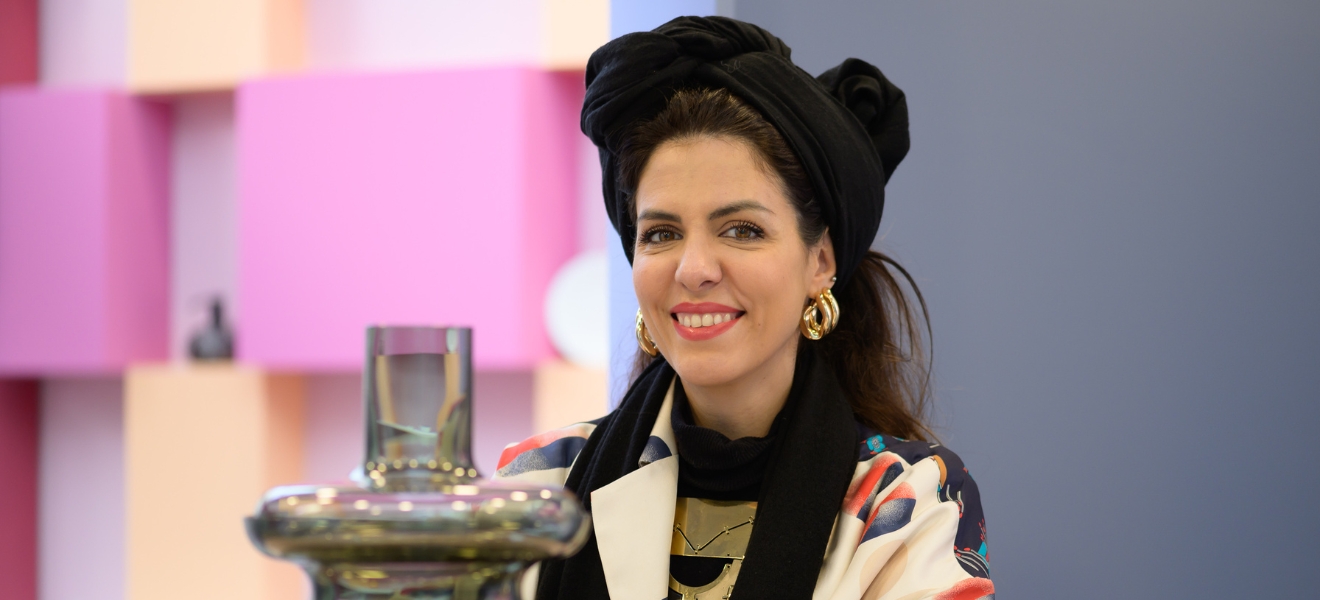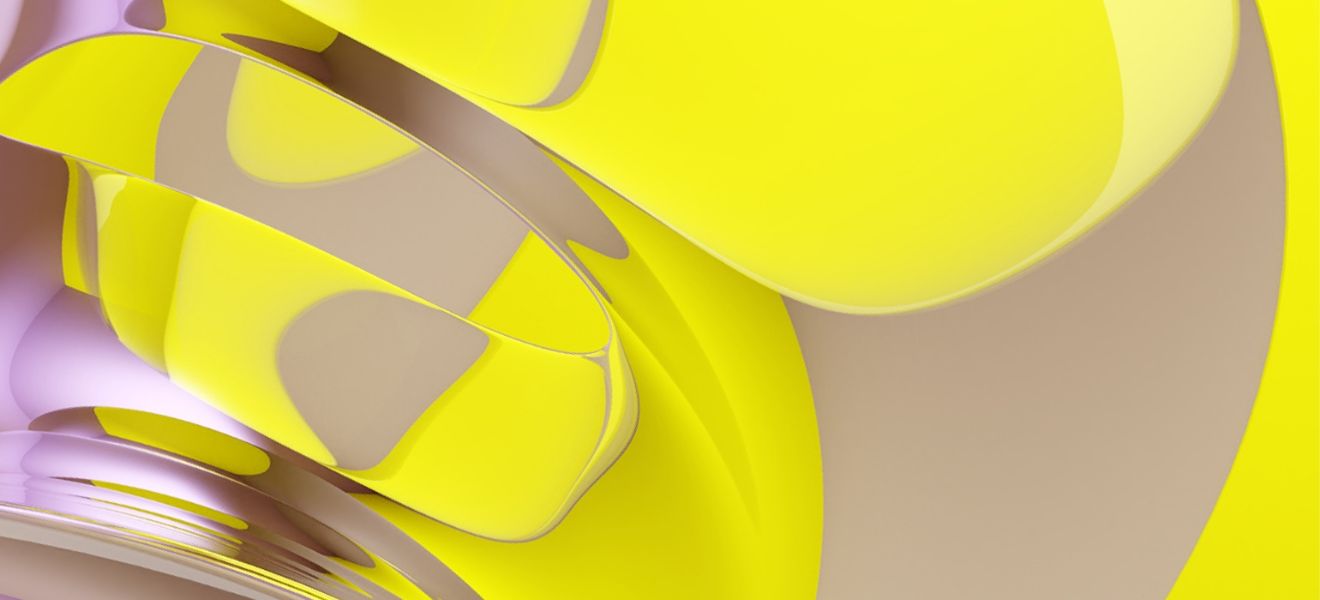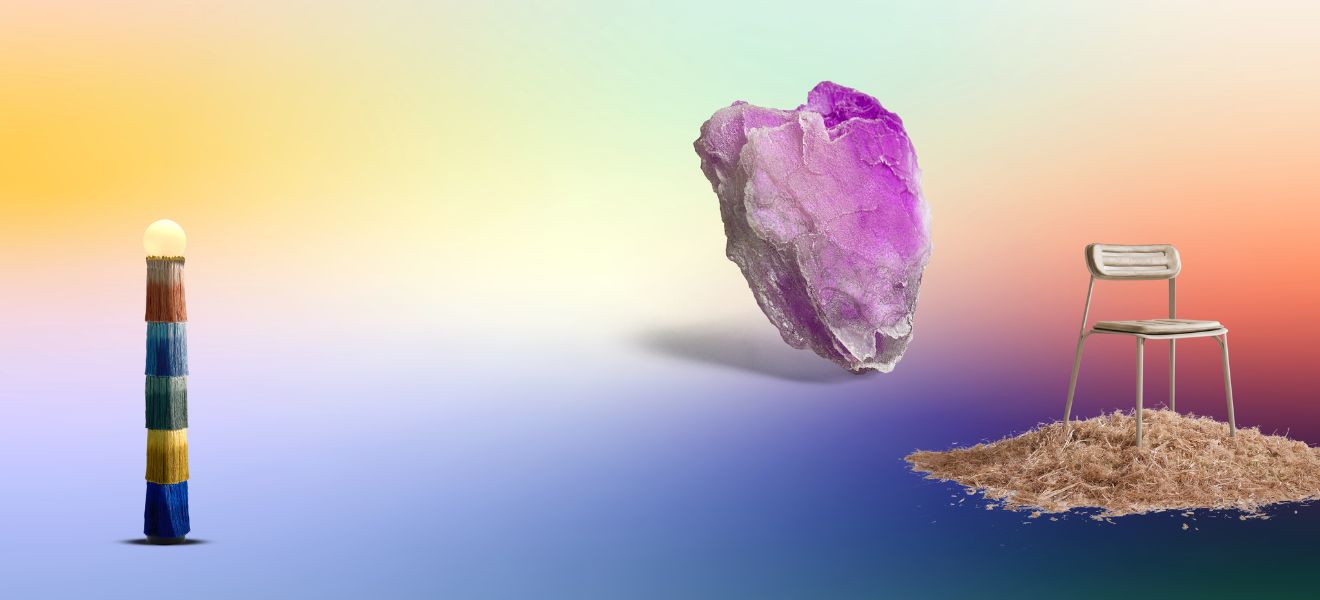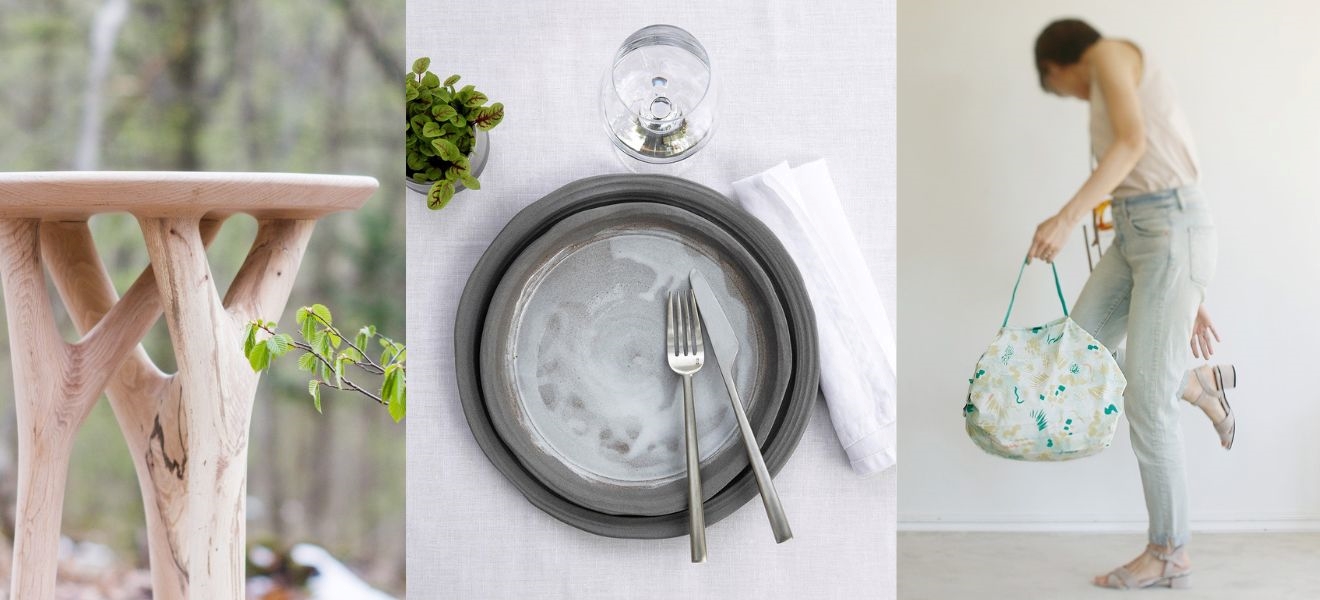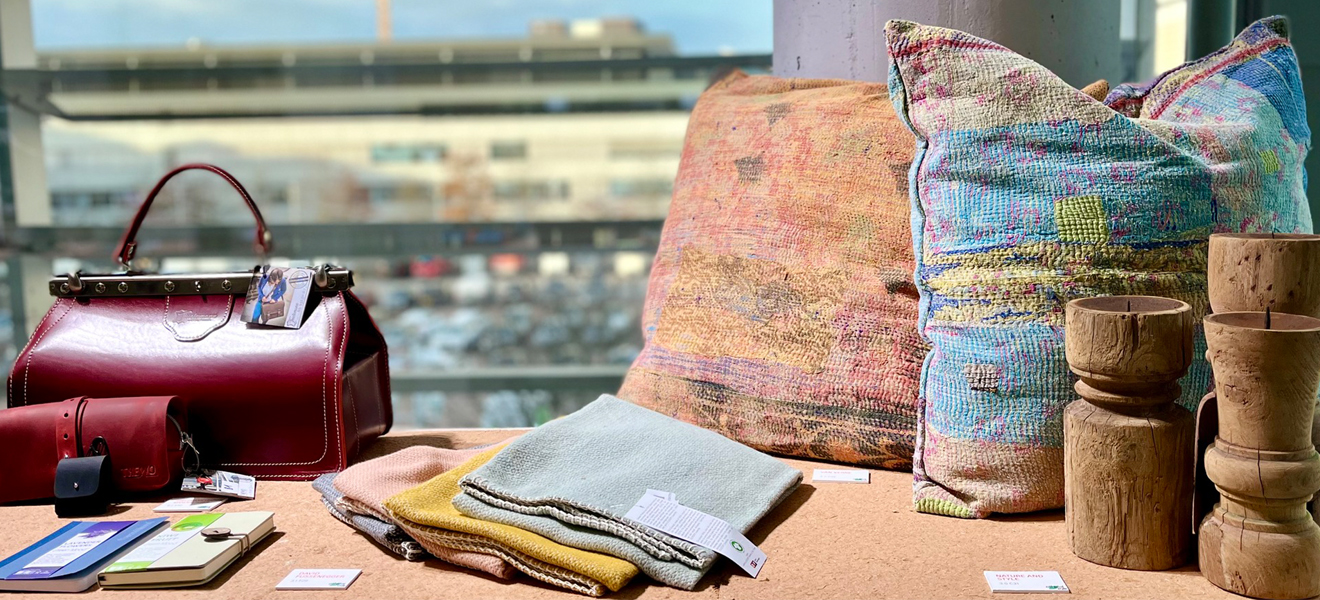Ineke Hans knows what she wants from design. For this 52-year-old Dutch designer, products must influence life. If something doesn’t communicate, it hasn’t been properly thought through. This has been Hans’ creative driver for more than two decades. We met up with her at Ambiente 2019 to talk about the future of design. Next year, Hans will be leading her own designer tour of the fair. We wanted to know where the sector is heading. But instead of doing any trend forecasting, she poses philosophical questions to which the industry must find answers.
Hans laid the foundations for her craft at the ArtEZ University of the Arts in Arnhem and the Royal College of Art in London. In 1998, three years after completing her master’s degree in furniture design, Hans founded her own studio. Since then she has been designing products, spaces and buildings. In her work, she plays with the interaction between people and objects. She focuses not just on details, but also on functions. Her down-to-earth, hybrid design approach has already resulted in several international design prizes, including four Red Dot Awards and three Design Plus Awards. Hans’ works are to be found not just in shops but also in various international museums, including the Boijmans Van Beuningen Museum in Rotterdam, the Victoria and Albert Museum in London, the Musée des Arts Décoratifs in Paris and the Art Institute of Chicago.
Ms Hans, you often emphasise that the social aspect of design products is particularly important to you.
Certainly, good design cannot be anti-social. At the end of the day, it must engage with people. A designer shouldn’t just focus on creating new things. We have to ask ourselves: What do we really need? What helps us? So that we don’t just continue to work on what has been around for years.
Is this an idea that has come with professional experience?
It’s more to do with what’s required. For a long time, design was chiefly concerned with creating nice-looking things. Primarily, they had to be nice and attractive. But just being good-looking is no longer enough. We already have things that are nice-looking. And that’s great. We need them for our minds, our spirits.


You have said that it’s no longer possible to talk about Dutch design. What did you mean by that?
Today, we’re all online. We all read the same design magazines. We are inspired by the same things.
Is that something you are unhappy about?
I’m not unhappy about it at all. It doesn’t mean that design isn’t still changing. Working conceptually, for example, is great. But the meaningfulness and influence of a product has become increasingly important in recent years. This has been recognised not only by Dutch but also by young German designers. However, at the German Design Awards you didn’t see many products that would have come from young Dutch designers or, for instance, from my German students.
Which ones have particularly stuck in your memory?
There was a cylinder made of aluminium. It was a black fire extinguisher for the kitchen. It had the name of the brand on it and could just as easily have been a container for coffee pods. How do I know what the object is supposed to be used for? Things have to communicate. There was a requirement there for creating a clear design – and that was successful. But what’s wrong with a red fire extinguisher where you don’t have to work out what it’s for and how it works when you’ve got an actual fire to deal with? On the other hand, there were products that impressed me, for instance a device for cutting the umbilical cord. Normally, you need five different instruments for that job. This new product is very small but will have a big impact in the medical field, for instance in Africa. That’s important. Here we have the social component again, which I like to emphasise. This makes it more than just a good-looking aluminium cylinder.
For Hans, there are differences that do not necessarily represent boundaries. In Holland, she sees a generation of design students intensively involved with concept. She also admires German designers for their manufacturing competence. Ideally, for Hans, these approaches go hand in hand. And with her professorship in Design and Social Context at the University of the Arts in Berlin, she seeks to promote that very mixture between conceptual idea and craft. According to Hans, ultimately a product must do both things: it must encourage its use and be able to be produced.

How has design changed?
One example is that we have smaller and smaller homes. You now have to think completely differently about storage space. And furniture also has to be used differently. My grandmother had a kitchen table, a dining table and a desk. But I now eat at the same table on which I made my breakfast and when I’ve finished, I open up my laptop and work on it.
Is this the sort of thing that inspires you?
Everyday life inspires me. And perhaps the less good-looking things. For instance, when we’re having a meal on our own in front of the TV, we don’t sit particularly elegantly – that’s human nature. We need products for situations such as this, like the bowl I designed for Royal VKB 14 years ago. Here the spoon is integrated in the handle. You can hold the bowl and spoon comfortably in one hand while flicking through the TV channels on the remote with the other.
Consumer behaviour has also changed.
Of course. In the past you bought a complete dinner service. Today’s young people don’t want this anymore. They haven’t got the space – and they aren’t interested either. For them what’s more important is financing their trip to India.
Are you inspired by other designers?
By their attitudes perhaps. When Gerrit Rietveld designed his red and blue chair in 1919, that was revolutionary. Back then, people’s furniture was still completely covered in dark colours. The chair must have looked like it came from another planet. And Rietveld continued to develop after that. At the end of his life he was doing completely different things. That inspires me.


You also studied under Vico Magistretti.
He had such a playful mind. I like that. When not everything is carved in stone. When you can be flexible and do things differently, because the time requires something different.
Scientists say that we can only imagine things that are similar to what we have already seen. So how can we create something completely new?
That’s the hard part. But thinking about and getting a feel for how we could live and work in the future is part of the design process. The first car didn’t look the same as the car we know today. It was a carriage without horses. Designers think things through in stages.
What is the difference between a trend and an innovation?
A trend tends to play with themes. For me, an innovation is something completely new. It often happens that a company produces an innovation and then many other companies follow suit. Then an innovation becomes a trend. But someone had to try it out first. Trends such as “orange is the now colour!” I find superficial. I can’t do that. And, for me, that’s not design.
Was Rietveld’s chair a trend or an innovation?
That was a political concept, so perhaps an innovation. But at that time, it was much more important to develop new production methods – to increase the clarity of design and reduce the decoration.

Hans received a special mention in the German Design Awards 2019 for her work for the British brand Hitch Mylius. With her studio, she created the modular FLIX seating system to meet the requirements of the modern working environment. According to Hans, the product name refers to the fact that it is “flexible and fixed”. The soft upholstery makes workspaces more comfortable and the individual elements enable different seating options, for instance for group meetings or confidential discussions. Although the system has a small number of modules, they offer a multitude of possibilities. The jury praised the “striking, contemporary design” and the “original and attractive” approach. The Firemill fire extinguisher and the ClampCut umbilical cord clamp, which Hans mentions in the interview, were among the award winners.
Which current trend do you find overrated?
Probably minimalism. Because when you really get involved with people, even those who are not so ‘design-minded’, you find that they like a bit of ‘tralala’, they like decoration. Even cave dwellers liked decoration. And that’s what I’d like to see in German design: a little more ‘tralala’ again. It’s great to make something clean. But in Germany people think that design has to be square or round or triangular and black, silver or aluminium and stainless. I don’t see it that way. A product must have character. It doesn’t have to be over-decorated, but it has to be a bit more of a friend than an aluminium cylinder could be.
Are these your criteria for a good design? That the product becomes more of a friend, it acquires more soul?
A good design must itself explain how it works. Otherwise, what is going to motivate the user to actually use it at all? There are lots of good signals that you can transmit with the design. And sometimes all you need is a handle that changes how you remove the lid of a pot or pull out a drawer. But you also have to be careful. Because if a design shouts too loudly – and that’s the idea behind this aluminium fire extinguisher – it runs the risk of quickly becoming outdated. You have to find a good balance between the timelessness of a product and its character.
Are there dependable classics? Things that always work?
Something like a trick, you mean? If it were that simple, it wouldn’t be design. For me, it’s more like if I don’t have a good idea, nothing is created.
For Iittala you designed the ‘Plektra’ stool, which can also be used as a side table. You yourself say about the product that it should be “no more complicated than it has to be”. Does good design have to be complicated at all?
No. But it shouldn’t be as uncomplicated as …
The black fire extinguisher?
Exactly! But since I’m thinking about it again, it probably impressed me more than I thought. Nevertheless, the “Plektra” stool has more character, even if it is simple as well.


What sort of character?
My mother used to tell me that you don’t sit on side tables. But in our small apartments these days a side table, which can also be used as a stool, is perhaps not so bad after all. And actually doesn’t a side table fit better with the Iittala brand since you can put your coffee cup on it? This hybrid was my idea – Iittala actually only wanted a stool from me.
Is sustainability a positive sign of the goodwill of the industry or are consumers demanding it?
It is also to do with marketing. But today’s customers are better informed. They are often much further ahead than the industry as a whole. Young people in particular have a completely different attitude towards status. Today, we have everything on our phones and laptops. And if the rest of our life is able to fit into a suitcase, so much the better. This is another a challenge that a trade fair such as Ambiente has to face.
Are you currently working with sustainable materials?
Yes. For example, in the design of an injection-moulded chair – which is exciting. Lots of people are currently trying to work with sustainable plastic. I actually obtained a sample of a bio-plastic 25 years ago. You could use it to make a golf tee, for example. If you lost it on the course, that wouldn’t be a problem as it would simply decompose. But making a chair out of it is more complicated. Because that needs design – a person has to be able to sit on it.
The negative Plagiarius Award was presented again at Ambiente. Is that something that consumers influence?
Many people simply cannot afford things and so they buy the cheaper copy. That’s something that as a designer you have to struggle with. You can have great ecological principles, but you can’t blame people who don’t have money for buying a product that may be inferior. It’s simply cheaper. You must be careful not to be unfair here. Although, of course, it can also be a question of priority. You can decide not to buy copies and instead save up for a little longer.
Does good design always have to be expensive?
No, but it must be cleverly thought out.
Can you give me an example of a product that is well thought out, but affordable?
There are things that weren’t created by big designers. In South America, for example, someone has thought through how to provide more light in corrugated tin huts that have no electricity. They have poured chlorinated water into a Coca-Cola bottle and inserted it through the metal ceiling. The corrugation of the bottle then acts like a lens. These sorts of thing are developed by people who have problems that don’t involve following the latest shopping trends.

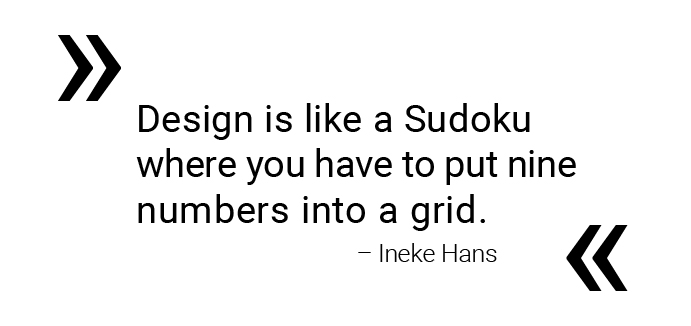
This year, Hansjerg Maier-Aichen took visitors on tours of the Living and Giving areas at Ambiente for the last time. He focused on the authenticity of products and explained what a product needs to succeed in a competitive environment. Next year, you will take over his position. What will be your themes?
For me, it’s interesting how a traditional brand can move with the times. There are new technologies in the field of porcelain, which Kahla showcased at Ambiente this year. And Royal Delft is also addressing this area. These are companies that reflect on things in order to keep up with the times. But how do they do that without distorting their company history? Such questions are relevant.
As a designer, Hans regularly reflects on the boundaries and responsibilities of her craft. She spoke about the future of European design at the Salone del Mobile in Milan in 2017 and most recently discussed the influence of design in everyday life at a symposium at the Museum für Kunst und Gewerbe in Hamburg. For Hans it is less important to create something that we need now than to find out what we will need in the future – and how industry can implement these ideas sustainably.
What challenges will retail have to face in the future?
With online shopping you deal directly with the customer. This not only places completely new demands on retailers, but also on me as a designer. When Thonet designed the No. 14 chair in 1859, he thought about the packaging at the same time. They managed to pack 36 disassembled chairs, including screws, into a cubic metre of space. This was at a time when half of Europe was emigrating to America. Those Italian extended families needed lots of inexpensive chairs. The Thonet company then mass-produced reasonably priced products for the first time. This was almost 100 years before Ikea came along and developed even flatter packaging. And now customers are asking me to design a three-seater sofa that can be delivered through the letter box.
Can design ever deliver the perfect solution?
Design is like a Sudoku where you have to put nine numbers into a grid. Here we have to fit sustainability and intelligent production, interaction with people, psychology and beauty, clever design and that it will still be relevant in ten years’ time. That’s a pretty complex thing. Not everyone always manages to solve this Sudoku. But it is incredible fun to try.

